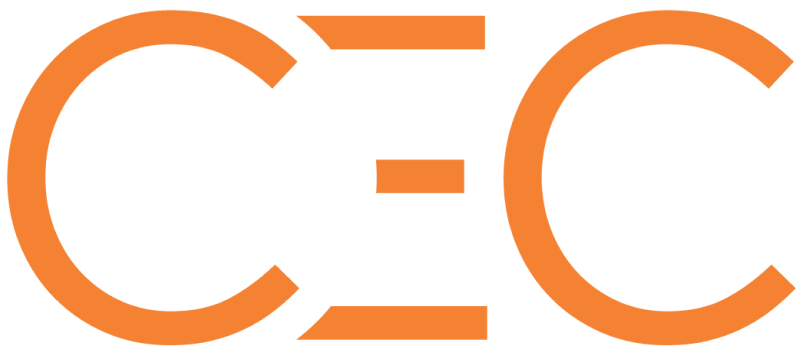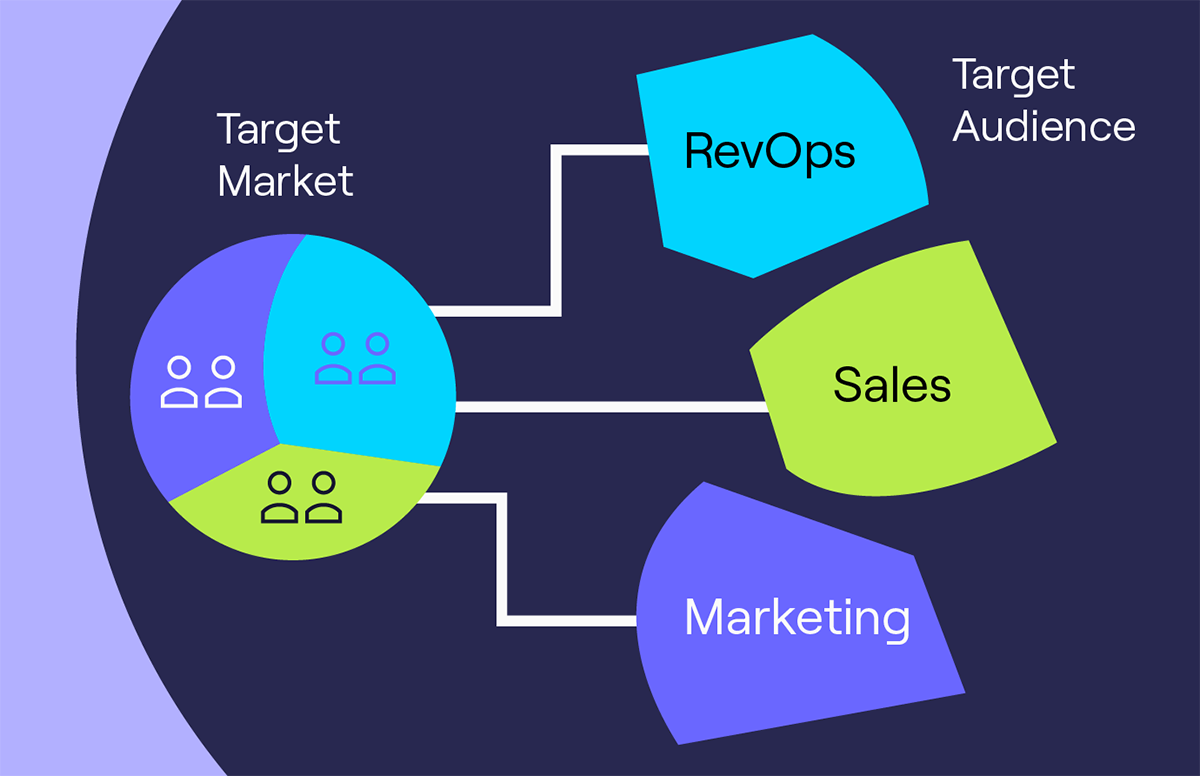Marketing Automation Strategies That Drive Revenue
Marketing automation strategy FAQs:
Want to learn more about marketing strategies? Read our CMO’s book. 👇
Let’s face it: even if you’re marketing for a small company, there’s always a lot going on, and it’s easy to get overwhelmed.
A B2B marketing automation strategy can be your saving grace.
Getting things done becomes much easier and more effective when you can automate more tasks.
This essential guide offers all the insight you need to recharge your marketing automation strategies. 👇
What is a marketing automation strategy?
A marketing automation strategy is an approach that uses software to automate repetitive tasks across multiple channels. It streamlines workflows and helps improve the consistency and effectiveness of the content reaching your audience.
B2B marketing automation has become essential for businesses to streamline processes and reach a wider audience effectively. By automating various tasks within your digital marketing mix, you can save time and resources while delivering targeted and personalised content.
There are three main aspects of a marketing automation strategy:
1. Email marketing
Set up automated email campaigns to nurture leads, engage with customers, and drive conversions.
By segmenting your email lists and setting up automated workflows based on customer behaviour, you can deliver the right message to the right person at the right time.
2. Lead scoring
Tracking and scoring leads based on their interactions with your content, website, and emails can help you prioritise and focus on leads most likely to convert into customers.
This can increase efficiency and improve the overall effectiveness of your marketing efforts.
3. Content marketing
Social media scheduling, content creation, analytics tracking, and more fall under this category. Automating these tasks frees up valuable time to focus on strategy, creativity, and building relationships with your audience.
One key thing to remember is that to get the most out of it, you shouldn’t just set it up and forget about it.
Continually test and optimise your workflows so your strategy remains strong against changing market dynamics.
Why use a B2B marketing automation strategy?
It’s all about time. Not only to give you more of it but also to shorten it when it comes to your B2B sales cycles.
Efficiency is vital in B2B sales, as some conversions can take months. Any improvements you make will help you reach your sales goals faster.
Apart from the time aspect, these are some other reasons why it makes sense to implement a marketing automation plan:
1. Efficiency and consistency
One key benefit of implementing a B2B marketing automation strategy is the improved efficiency it brings to your marketing efforts. Additionally, it helps to increase consistency in your messaging across different channels.
Imagine you’re a B2B company selling high-tech solutions to large corporations.
Your sales cycle involves multiple touchpoints:
- Emails
- webinars
- SOM posts
- white papers, etc.
Keeping track of all these interactions manually is a massive task. With marketing automation, you can set up your workflows and sit back confident that your leads will receive the right content at the right time.
2. Improved lead management and nurturing
Marketing automation allows for more effective lead management. How?
By automatically scoring and prioritising leads based on their behaviour and engagement. This ensures that sales teams focus on the most promising leads, increasing the chances of conversions.
Automation also facilitates personalised lead nurturing campaigns, delivering tailored content to prospects. This targeted approach builds stronger relationships and effectively guides leads through the sales funnel.
3. Personalisation at scale
One size does not fit all!
We’re blessed to live in a time when we can personalise our communications to a large audience. Today’s B2B buyers expect their experiences to be more personal.
A key part of marketing automation is being able to segment your audience to a higher degree. This allows you to tailor your messages based on criteria like industry, company size, behaviour, pain points, and so much more.
4. Data-driven decision making
Numbers don’t lie.
With marketing automation, you can access a treasure trove of data and analytics to help personalise your campaigns. You can track marketing metrics like open rates, click-through rates, and conversion rates.
Businesses can use this data to identify trends, optimise strategies, and drive better results.
For example, if you notice that your webinars have a high attendance rate but low conversion, you can adjust your post-webinar follow-up strategy to improve results.
5. Higher ROI
A B2B marketing automation strategy allows businesses to scale their marketing efforts as they grow.
By automating repetitive tasks and workflows, businesses can handle larger volumes of leads and customers without sacrificing quality or efficiency.
Your marketing team will have more time to focus on strategy and creativity, which are key drivers of improved long-term success.
The efficiency improvements created by automated campaigns reduce cost per lead, improving your overall return on investment.
For instance, automated lead nurturing with precise targeting and personalisation results in higher engagement rates. This drives more conversions and, consequently, higher revenue. It’s a win-win!
6 steps to create a successful marketing automation strategy
Using automation to create a successful B2B marketing automation strategy can significantly enhance your company’s efficiency, lead generation, and overall success.
Now, the question is, how do you go about creating a marketing automation strategy?
Here’s a step-by-step guide to get you started:
Step 1: Define your goals
First things first:
You must decide what you want to achieve through marketing automation.
Are you looking to generate more leads, nurture existing ones, or drive more conversions?
Your goals will determine the types of automation tools you need and the workflows you’ll set up.
Be specific with your goals.
Instead of saying, “I want more leads,” aim for, “I want to increase lead generation by 20% in the next six months.” Clear, actionable goals set the foundation for everything that follows.
Once you’ve defined your goals, you can start mapping out the strategies and tactics needed to achieve them.
For example, if your goal is to increase lead generation by 20% in the next six months, you should:
- Create targeted email campaigns for lead generation.
- Optimise your website for conversions.
- Implement lead-scoring techniques.
It’s also essential to prioritise your goals. Not all goals will be equally important or urgent, so identify which ones should take precedence.
Step 2: Know your audience
Understanding your audience is crucial.
- Who are they?
- What challenges do they face?
- What motivates them to make a purchase?
Create detailed buyer personas, including demographics, job titles, pain points, and buying behaviours.
The more you know about your audience, the better you can tailor your messaging.
Craft your customer personas as if you were programming each room of your home to sync with Alexa, give each one unique traits and preferences.
For example, if your target audience is mid-level managers in the tech industry, your content should address their specific challenges, like managing remote teams or implementing new technologies. Tailor your communication so they deliver logical, targeted solutions to what they’re battling with.
By understanding your audience more deeply, you can segment your email lists and create personalised messaging that resonates with each group.
Tools like Cognism offer data enrichment to ensure all your lists are up to date, reducing bounce rates and ensuring you reach the right people.
This helps you nurture leads and move them through the sales funnel more effectively.
Knowing your audience will also allow you to choose the best channels to reach them.
If your target audience spends most of their time on LinkedIn, then focusing your efforts on that platform will be more effective than spreading yourself too thin across multiple channels.

Global Director of Data @CEC Marketing

Step 3: Choose the right tools
There are plenty of marketing automation tools to choose from.
Each has strengths and weaknesses, so choosing the one that fits your needs and budget is essential.
Do your research, read reviews, and use the free trials to find the best fit.
For instance, if you’re a small business with a limited budget, a tool like HubSpot might not be the best because of its premium pricing; finding one with a lower single-user license price would probably be better.
Alternatively, a tool like ActiveCampaign might be better. It’s essential to consider the tool’s features and the company’s level of support and training.
When choosing a marketing automation tool, some important factors include ease of use, integration capabilities with your existing systems, scalability for future growth, and the ability to track and measure results.
Step 4: Map out your workflows
Workflows are the backbone of your marketing automation strategy.
They’re sequences of automated actions triggered by events in your customer journey. You can seamlessly guide your leads through the funnel by mapping out your leads and identifying key touchpoints.
For example, a workflow for new leads might unfold as follows:
/Marketing%20Automation%20Strategies/Marketing-Automation-Strategy-info.webp?width=672&height=339&name=Marketing-Automation-Strategy-info.webp)
Each event leads to the next in a carefully orchestrated sequence.
To effectively map out your workflows, start by identifying the stages of your customer journey.
This could include:
- Awareness.
- Consideration.
- Decision.
- Retention.
For each stage, determine what actions or events should trigger automation.
Next, define the goals for each workflow.
Are you trying to nurture leads towards a sale?
- Educate them about your products or services.
- Encourage repeat purchases from existing customers.
- Having clear goals will help you create focused and effective workflows.
Once you’ve mapped out your workflows, testing and refining them is essential.
Analyse the data from your automation campaigns to see what’s working and what isn’t. Use this information to make adjustments and improve your strategies over time.
Step 5: Create compelling content
Even the most sophisticated automation strategy will fall flat if it doesn’t have great content.
Invest time and resources into creating valuable, engaging content that addresses your audience’s needs and pain points. This can include blog posts, white papers, case studies, videos, and more.
Remember, content without context is like a Roomba with a broken power source. So, ensure your content is relevant to each stage of the buyer’s journey.
Tailor your content to different audience segments and personalise it based on their behaviour and interests.
Use data from your marketing automation platform to understand what content resonates with each segment. Then, adjust your strategy accordingly.
Consider creating a content calendar that aligns with your automation workflows, ensuring the right content is available at each touchpoint in the customer journey.
Remember to optimise your content for search engines to attract organic traffic. Use keywords strategically, and regularly review and update your content to keep it fresh and relevant.
Step 6: Test and optimise
Marketing automation is not a set-it-and-forget-it solution. Continuous testing and optimisation are key to success.
Use A/B testing to compare different versions of your emails, landing pages, and other content, then analyse the results and make adjustments.
For instance, if emails with personalised subject lines have higher open rates, implement this across all your campaigns.
Additionally, track key metrics such as click-through rates, conversion rates, and ROI to gauge the effectiveness of your marketing automation efforts.
Based on these insights, make data-driven decisions to refine your strategy and ensure you deliver the right message to the right audience at the right time.
It’s also important to regularly review and update your buyer personas and segmentation criteria based on new data and insights. This will help you better target your audience and tailor your content and messaging to their needs and interests.
By following these steps and implementing a comprehensive B2B marketing automation strategy, you can streamline your processes, nurture leads more effectively, and ultimately drive more sales for your business.
Remember, success in marketing automation requires ongoing effort and analysis, so be prepared to continuously refine your approach to stay ahead of the competition and deliver results.
Automation marketing strategy: key takeaways
There’s no longer a reason to feel intimidated by the immense to-do list in modern B2B marketing.
Not when you have marketing automation as your saving grace.
Automation will transform your marketing efforts from chaotic to cohesive by taking over repetitive tasks, personalising your outreach, and leveraging data-driven insights.
Here are our top tips for a successful B2B marketing automation strategy:
- Segmenting your audience is crucial in automation marketing. You can provide more personalised and engaging content by tailoring content to specific groups based on factors like industry and behaviour.
- Create valuable content to drive a successful automation strategy. Make sure it addresses the audience's needs and pain points.
- Utilise data from your automation platform to analyse content performance and make informed decisions to improve your campaigns.
- Marketing automation involves constantly testing and optimising content. Use A/B testing to compare versions, track metrics, and improve your strategy.
- Use data and insights to personalise your content and drive audience engagement.
- Keep up with new trends and data in marketing automation. Regularly update your strategies, buyer personas, and segmentation criteria for the best results.
- Get your sales and marketing teams on the same page. This will improve automation and drive business results.
After you’ve followed the steps we’ve outlined, find an automation platform that fits your purpose and embrace a test-and-refine mindset. Then, you’ll be well on your way to marketing automation mastery.
So, take up the mantle of automation and look forward to your B2B marketing running like a well-oiled machine.
Power your strategy with Cognism
Choosing the right marketing automation tool is crucial for the success of your B2B marketing automation strategy.
Cognism gives you:
- High-quality B2B data to power your campaign automation.
- The widest coverage of mobile numbers globally.
- GDPR data for a compliant strategy.
- Enrichment to ensure your database is always up to date.
Book your demo today 👇
/CTAs%20(SEO)/High-res%20CTA-marketing-goals-webp.webp?width=672&height=258&name=High-res%20CTA-marketing-goals-webp.webp)

/CRM%20growth/crm-growth-resource-card.webp)
